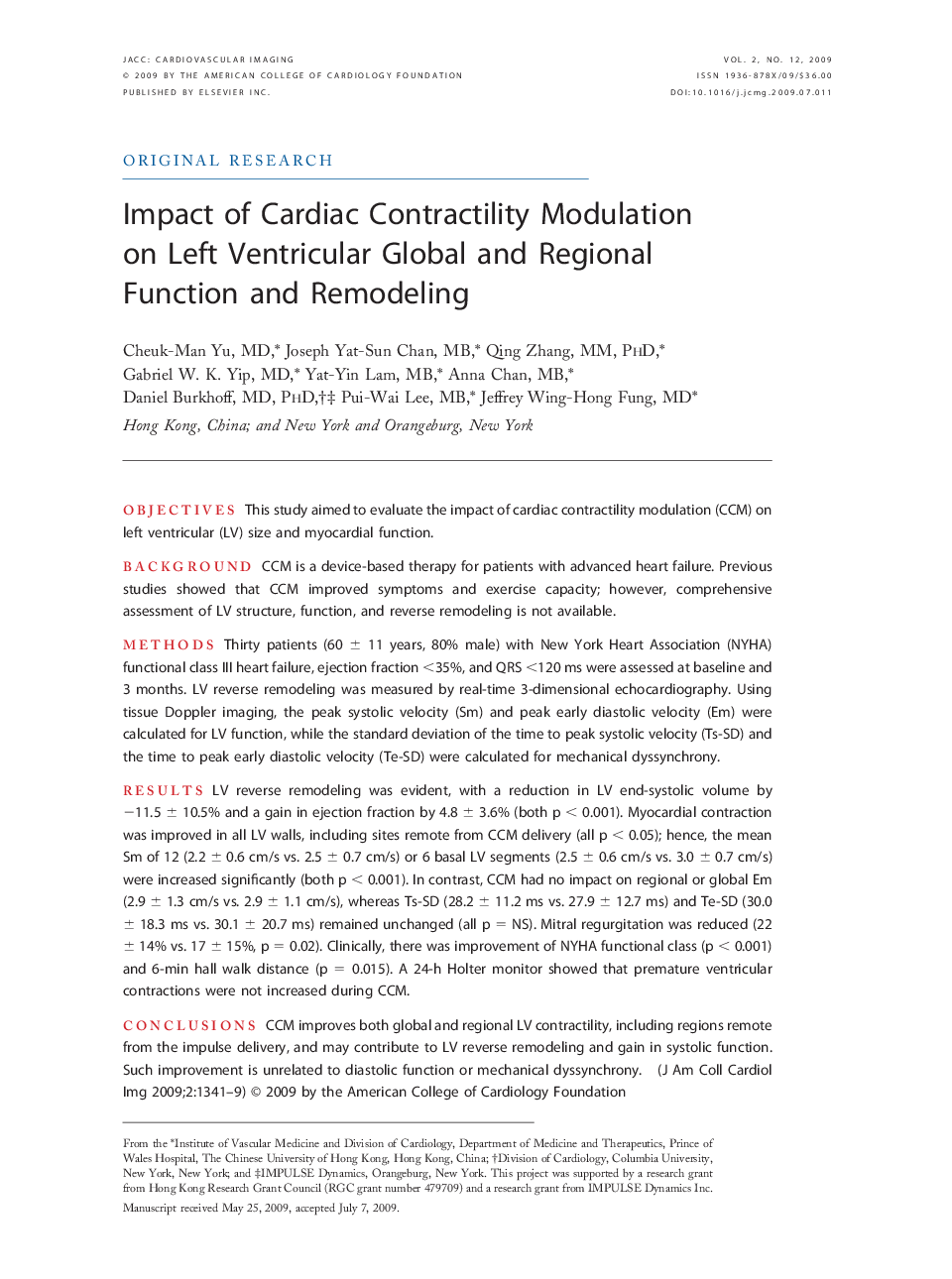| کد مقاله | کد نشریه | سال انتشار | مقاله انگلیسی | نسخه تمام متن |
|---|---|---|---|---|
| 2938979 | 1176966 | 2009 | 9 صفحه PDF | دانلود رایگان |

ObjectivesThis study aimed to evaluate the impact of cardiac contractility modulation (CCM) on left ventricular (LV) size and myocardial function.BackgroundCCM is a device-based therapy for patients with advanced heart failure. Previous studies showed that CCM improved symptoms and exercise capacity; however, comprehensive assessment of LV structure, function, and reverse remodeling is not available.MethodsThirty patients (60 ± 11 years, 80% male) with New York Heart Association (NYHA) functional class III heart failure, ejection fraction <35%, and QRS <120 ms were assessed at baseline and 3 months. LV reverse remodeling was measured by real-time 3-dimensional echocardiography. Using tissue Doppler imaging, the peak systolic velocity (Sm) and peak early diastolic velocity (Em) were calculated for LV function, while the standard deviation of the time to peak systolic velocity (Ts-SD) and the time to peak early diastolic velocity (Te-SD) were calculated for mechanical dyssynchrony.ResultsLV reverse remodeling was evident, with a reduction in LV end-systolic volume by −11.5 ± 10.5% and a gain in ejection fraction by 4.8 ± 3.6% (both p < 0.001). Myocardial contraction was improved in all LV walls, including sites remote from CCM delivery (all p < 0.05); hence, the mean Sm of 12 (2.2 ± 0.6 cm/s vs. 2.5 ± 0.7 cm/s) or 6 basal LV segments (2.5 ± 0.6 cm/s vs. 3.0 ± 0.7 cm/s) were increased significantly (both p < 0.001). In contrast, CCM had no impact on regional or global Em (2.9 ± 1.3 cm/s vs. 2.9 ± 1.1 cm/s), whereas Ts-SD (28.2 ± 11.2 ms vs. 27.9 ± 12.7 ms) and Te-SD (30.0 ± 18.3 ms vs. 30.1 ± 20.7 ms) remained unchanged (all p = NS). Mitral regurgitation was reduced (22 ± 14% vs. 17 ± 15%, p = 0.02). Clinically, there was improvement of NYHA functional class (p < 0.001) and 6-min hall walk distance (p = 0.015). A 24-h Holter monitor showed that premature ventricular contractions were not increased during CCM.ConclusionsCCM improves both global and regional LV contractility, including regions remote from the impulse delivery, and may contribute to LV reverse remodeling and gain in systolic function. Such improvement is unrelated to diastolic function or mechanical dyssynchrony.
Journal: JACC: Cardiovascular Imaging - Volume 2, Issue 12, December 2009, Pages 1341–1349